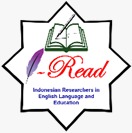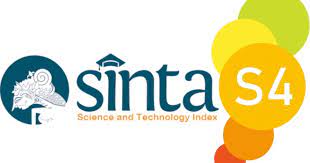Smart interactive whiteboard in EFL class at Islamic university
DOI:
https://doi.org/10.22219/englie.v5i2.35010Keywords:
EFL Students, Islamic University, Perception, Questionnaire, Smart Interactive WhiteboardAbstract
This research aims to investigate students’ perception of using Smart Interactive Whiteboard in the English as a foreign language (EFL) classroom in the State Islamic University in Jambi city. This research employs a quantitative survey method, utilizing a questionnaire as the primary data collection tool. The questionnaire consisted of 26 five-point Lickert-scale items in order to measure the students’ perceptions about (1) Perceived Learning Contribution, (2) Motivation, (3) Perceived Efficiency, and (4) Perceived Negative Effects. The results of the survey show that students like having smart, interactive whiteboards in the classroom. The results show that these technological tools help people learn, get motivated, feel like they are working well, and don't have any bad affects. The combination of audio and visual elements makes it easier to understand and provides a stimulating learning environment. Students also say they are more engaged, focused, involved, and excited about learning. Smart, interactive whiteboards are thought to make classrooms more visible, more organized, and better at keeping track of time. The fact that most students disagree with the idea that these tools have bad results shows that they like using them. Overall, the results show how smart interactive whiteboards can be benefited for positive learning experiences, motivation, efficiency, and student engagement in a positive and pleasant learning atmosphere.
Downloads
References
Abdullah, R. N., Abdul Muait, J., & Ganefri, G. (2019). Students’ perception towards modern technology as teaching Aids. Asian Journal of Assessment in Teaching and Learning, 9(2), 37–42. https://doi.org/10.37134/ajatel.vol9.no2.5.2019
Adel, P., Aladl, M., & Ahmed, A. M. (2019). The effects of using an Electronic interactive whiteboard in developing students’’ attitude, cognitive motivation and academic achievement. Journal of Education and Practice, 10(10), 124–129. https://doi.org/10.7176/jep/10-10-15
Ahmad, W., & Ali, Z. (2019). Interactive whiteboard (iwb) effectiveness in vocabulary achievement and motivation: Saudi EFL learners’ perceptions and insights. Bulletin of Advanced English Studies, 2(2), 90–103. https://doi.org/10.31559/baes2019.2.2.5
Al-Rabaani, A. H. (2018). Social studies teachers’ perspectives on the advantages and challenges of interactive whiteboard application in Oman. European Journal of Educational Research, 7(4), 753–762. https://doi.org/10.12973/eu-jer.7.4.753
Almekhlafi, A. G., Ismail, S. A., & Al-Mekhlafy, M. H. (2016). Male and female language teachers’ technology integration differences in elementary schools in the United Arab Emirates. International Journal of Research Studies in Educational Technology, 6(1), 1–14. https://doi.org/10.5861/ijrset.2016.1521
Aydlnll, J., & Ortaçtepe, D. (2018). Selected research in applied linguistics and English language teaching in Turkey: 2010-2016. Language Teaching, 51(2), 210–245. https://doi.org/10.1017/S0261444818000010
Aykat, Ş., & Günüç, S. (2020). Review of the opinions of vocational high school teachers, students, and administrators on the interactive whiteboard. Turkish Online Journal of Qualitative Inquiry, 11(1), 140–160. https://doi.org/10.17569/tojqi.639139
Bakiyeva, F. ., Primkulova, A. ., & N, D. M. (2020). Smart and development of modern education. Statistics and Economics, 07(3), 17–19. https://doi.org/10.21686/2500-3925-2015-3-17-19
Balta, N., & Duran, M. (2015). Attitudes of students and teachers towards the use of interactive whiteboards in elementary and secondary school classrooms. Turkish Online Journal of Educational Technology, 14(2), 15–23.
Check, J., & Schutt, R. K. (2012). Research Methods in Education. Sage Publication.
Cohen, L., Manion, L., & Morrison, K. (2018). Quantitative data analyses. In Research Methods in Physical Activity and Health. https://doi.org/10.4324/9781315158501-17
Copriady, J. (2014). Self - Motivation as a mediator for teachers’ readiness in applying ICT in teaching and learning. Turkish Online Journal of Educational Technology, 13(4), 115–123. https://doi.org/10.1016/j.sbspro.2015.01.529
Creswell, J. W. (2014). Research Design (4th Editio). Sage Publication.
Davis, J. W. (2018). The educational contribution of interactive whiteboards. International Journal of Conceptual Structures and Smart Applications, 6(1), 63–76. https://doi.org/10.4018/ijcssa.2018010105
De Vita, M., Verschaffel, L., & Elen, J. (2018). The power of interactive whiteboards for secondary Mathematics teaching: Two case studies. Journal of Educational Technology Systems, 47(1), 50–78. https://doi.org/10.1177/0047239518767112
Gashan, A. K., & Alshumaimeri, Y. A. (2015). Teachers’ attitudes toward using interactive whiteboards in English language classrooms. International Education Studies, 8(12), 176. https://doi.org/10.5539/ies.v8n12p176
Hassan Alshaikhi, M. (2016). Improving 13-year-old students’ English vocabulary achievement using Interactive Whiteboard (IWB) in Jeddah, Saudi Arabia. Journal of Modern Education Review, 6(6), 424–427. https://doi.org/10.15341/jmer(2155-7993)/06.06.2016/008
Idoghor, U., Kasumu, & Oluwayimika, R. (2022). The use of interactive whiteboards for teaching and learning in tertiary institutions. International Journal Of Trendy Research In Engineering And Technology, 06(06), 28–33. https://doi.org/10.54473/ijtret.2022.6606
İstifçi, İ., Keser, A. D., Serpil, R., Önal, M. A., Alan, B., & Türkyılmaz, S. (2018). An analysis of teachers’ and students’ perceptions on the use of smart boards in foreign language classrooms. Turkish Online Journal of English Language Teaching (TOJELT), 3(2), 83–110. http://www.tojelt.com/OncekiSayilarDetay.aspx?Sayi=2018/2
Jeong, K. O. (2022). Facilitating sustainable self-directed learning experience with the use of mobile-assisted language learning. Sustainability (Switzerland), 14(5). 1-13. https://doi.org/10.3390/su14052894
Kellerman, A., Gurusinghe, N., Ariyarathna, T., & Gouws, R. (2018). Smart whiteboard for interactive learning. Proceedings - 2018 IEEE International Conference on Industrial Electronics for Sustainable Energy Systems, IESES 2018, 2018-Janua, 515–520. https://doi.org/10.1109/IESES.2018.8349930
Kırbas, A. (2018). The effect of interactive whiteboard applications supported by visual materials on middle school students’ listening comprehension and persistence of learning. Universal Journal of Educational Research, 6(11), 2552–2561. https://doi.org/10.13189/ujer.2018.061120
Kostikova, I. I., Gulich, O. O., Holubnycha, L. O., & Besarab, T. P. (2019). Interactive whiteboard use at english lessons: From university students to young learners. Espacios, 40(12), 1–5.
Kühl, T., & Wohninsland, P. (2022). Learning with the interactive whiteboard in the classroom: Its impact on vocabulary acquisition, motivation and the role of foreign language anxiety. Education and Information Technologies, 27(7), 10387–10404. https://doi.org/10.1007/s10639-022-11004-9
Kyriakou, A., & Higgins, S. (2016). Systematic review of the studies examining the impact of the interactive whiteboard on teaching and learning: What we do learn and what we do not. Preschool and Primary Education, 4(2), 254. https://doi.org/10.12681/ppej.9873
Lodico, M. . S. D. & V. K. (2010). Methods in Educational Research: From Theory to Practice, 2nd Edition. In The Canadian Journal of Action Research (Issue 3).
Luo, Y. F., & Yang, S. C. (2016). The effect of the interactive functions of whiteboards on elementary students’ learning. Journal of Educational Computing Research, 54(5), 680–700. https://doi.org/10.1177/0735633115628032
Mohamed, W., Qoura, A., & El Hadidy, M. (2019). An interactive whiteboard activities-based program to enhance efl primary learners’ writing skills and motivation. Journal of Research in Curriculum Instruction and Educational Technology, 4(2), 127–148. https://doi.org/10.21608/jrciet.2019.31943
Öz, H. (2014). Teachers’ and students’ perceptions of interactive whiteboards in the english as a foreign language classroom. Turkish Online Journal of Educational Technology, 13(3), 156–177.
Rinekso, A. B., & Lesagia, O. (2020). EFL instructors’ beliefs about the implementation of smartboard in language teaching practices. LLT Journal: A Journal on Language and Language Learning, 23(1), 1–23.
Rukminingsih, A. G., & Latief, M. A. (2020). Metode Penelitian Pendidikan. Penelitian Kuantitatif, Penelitian Kualitatif, Penelitian Tindakan Kelas. Erhaka Utama.
Rusandi, & Muhammad Rusli. (2021). Merancang penelitian kualitatif dasar/deskriptif dan studi kasus. Al-Ubudiyah: Jurnal Pendidikan Dan Studi Islam, 2(1), 48–60. https://doi.org/10.55623/au.v2i1.18
Tahmina, T. (2022). Enhancing motivation of the EFL learners by integrating technology. Language Literacy: Journal of Linguistics, Literature, and Language Teaching, 6(2), 262–268. https://doi.org/10.30743/ll.v6i2.6196
Tertemiz, N. (Isık), Sahin, D., Can, B., & Duzgun, S. (2015). Views of primary school teachers and students about the interactive whiteboard. Procedia - Social and Behavioral Sciences, 186, 1289–1297. https://doi.org/10.1016/j.sbspro.2015.04.099
Yangın Ekşi, G., & Yeşilyurt, Y. E. (2018). Stakeholders’ views about the FATIH Project: Smart EFL Classrooms. Journal of Language and Linguistic Studies, 14(1), 360–376. https://dergipark.org.tr/tr/pub/jlls/issue/43213/527904%0Ahttps://dergipark.org.tr/tr/download/article-file/650442
Zhang, Y. (2019). Investigating K-12 teachers’ use of electronic board in the classroom in the Central South of United States. Education and Information Technologies, 24(1), 825–841. https://doi.org/10.1007/s10639-018-9800-9
Рогульська, О., & Тарасова, О. (2021). Using interactive whiteboards to enhance english language instruction and learning. Збірник Наукових Праць Національної Академії Державної Прикордонної Служби України. Серія: Педагогічні Науки, 16(1), 342–353. https://doi.org/10.32453/pedzbirnyk.v16i1.709
Downloads
Published
How to Cite
Issue
Section
License
Copyright (c) 2024 Pratama et al

This work is licensed under a Creative Commons Attribution-ShareAlike 4.0 International License.
Authors who publish with English Learning Innovation (englie) agree to the following terms:
- For all articles published in English Learning Innovation (englie), copyright is retained by the authors. Authors give permission to the publisher to announce the work with conditions. When the manuscript is accepted for publication, the authors agree to automatic transfer of the publishing right to the publisher.
- Authors retain copyright and grant the journal right of first publication with the work simultaneously licensed under a Creative Commons Attribution-ShareAlike 4.0 International License that allows others to share the work with an acknowledgement of the work's authorship and initial publication in this journal.
- Authors are able to enter into separate, additional contractual arrangements for the non-exclusive distribution of the journal's published version of the work (e.g., post it to an institutional repository or publish it in a book), with an acknowledgment of its initial publication in this journal.
- Authors are permitted and encouraged to post their work online (e.g., in institutional repositories or on their website) prior to and during the submission process, as it can lead to productive exchanges, as well as earlier and greater citation of published work (See The Effect of Open Access).
This work is licensed under a Creative Commons Attribution-ShareAlike 4.0 International License.
















1.png)












